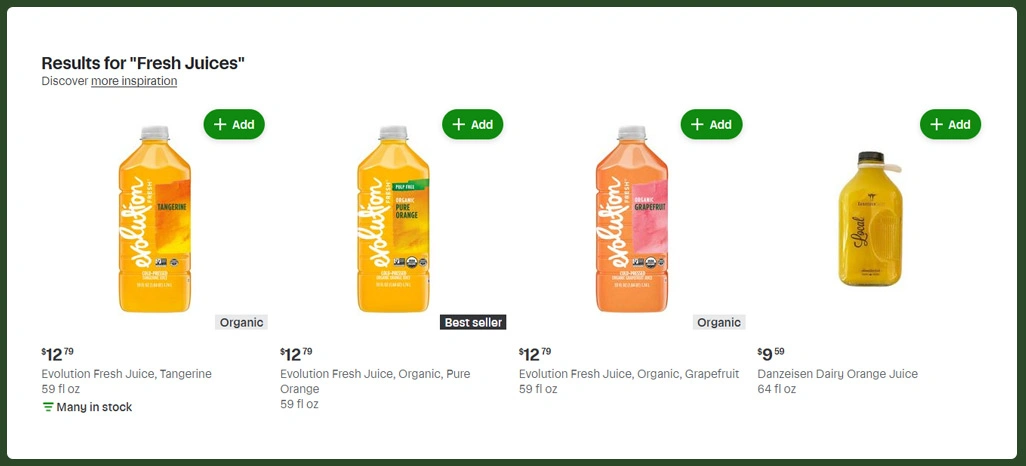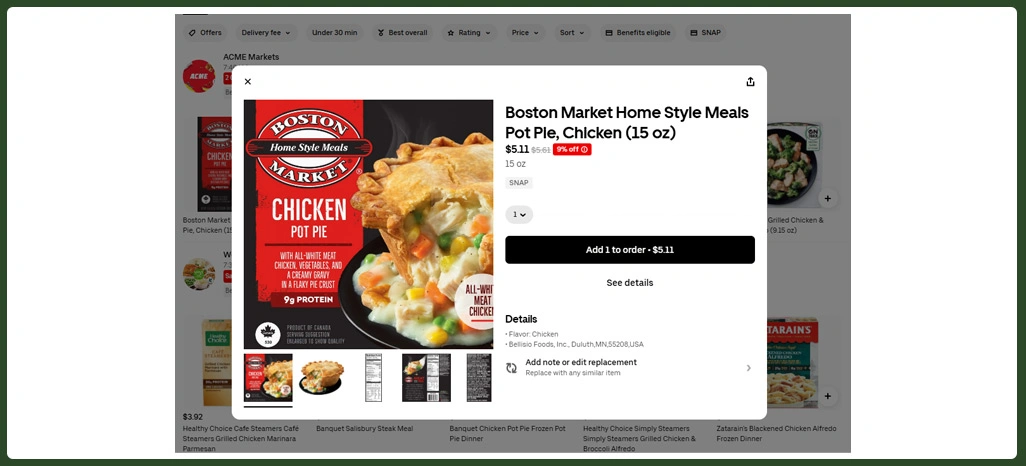What Can Web Scraping Datasets for Food, Grocery, and E-Commerce Uncover in 63% Market Trends?

Introduction
In 2025, digital transformation continues to shape the strategies of food, grocery, and e-commerce brands. Businesses are increasingly recognizing that relying solely on traditional market reports no longer provides the depth of insight necessary to remain competitive. By systematically collecting data from online menus, product listings, pricing changes, and consumer reviews, businesses can quantify trends and predict future demand with remarkable accuracy.
The ability to analyze granular data enables companies to understand consumer preferences, spot emerging products, and evaluate competitor strategies. Studies show that companies using digital datasets in decision-making processes report a 63% improvement in trend identification and inventory planning efficiency. Furthermore, integrating these datasets with predictive analytics tools provides actionable insights that can directly influence marketing campaigns, pricing strategies, and operational decisions.
From grocery chains tracking category performance to e-commerce platforms monitoring competitive pricing, Web Scraping Datasets for Food, Grocery, and E-Commerce has become a central pillar of intelligent business strategy. Its implementation is no longer optional but a necessity for companies aiming to remain agile in dynamic markets.
Understanding Competitive Pricing and Market Positioning Strategies

One of the major challenges for food and online retail businesses is assessing competitive pricing and understanding market positioning accurately. Companies often lack timely access to structured information that informs pricing, promotions, and assortment strategies. Leveraging Web Scraping for Food Industry can address this gap, providing automated data collection from competitor websites, product listings, discounts, and availability trends.
For example, a grocery retailer analyzing pricing data from 50 online stores discovered that adjusting pricing strategically could increase revenue by 18% within three months. This process allowed them to identify pricing gaps and adjust product positioning efficiently. The table below highlights a sample analysis:
| Product Category | Competitor Avg Price | Retailer Current Price | Suggested Adjustment | Predicted Sales Impact |
|---|---|---|---|---|
| Organic Snacks | $4.50 | $5.00 | $4.70 | +12% |
| Fresh Juices | $3.25 | $3.50 | $3.30 | +15% |
| Dairy Products | $2.80 | $2.90 | $2.85 | +10% |
Alongside price optimization, examining competitor strategies uncovers new market entrants and product gaps. Leveraging Web Scraping E-Commerce Datasets, companies can streamline inventory allocation and avoid overstock or understock situations. This data forms the basis for strategic decisions across marketing, supply chain, and sales.
Systematic data collection ensures that decisions are based on trends, not guesswork. By integrating competitive insights into daily operations, businesses enhance efficiency and maximize revenue potential. Structured analysis like this also supports strategic planning for product launches and promotional campaigns, allowing brands to strengthen their overall market positioning in a dynamic retail environment.
Driving Sustainable Growth Through Targeted Consumer Analysis

Expanding a business efficiently requires a clear understanding of consumer behavior and emerging product trends. Businesses often struggle to identify which products drive the majority of revenue or how to adjust marketing strategies for maximum impact. By utilizing Web Scraping Datasets Help Business Growth, companies can extract actionable information from multiple digital platforms, ensuring resources are invested in high-performing categories.
For instance, a retail chain tracking weekly sales for 100 SKUs discovered that only 20% of products generated 63% of overall revenue. With this insight, targeted promotions increased quarterly sales by 22%. The table below summarizes SKU-level performance metrics:
| SKU ID | Weekly Units Sold | Avg Customer Rating | Revenue Contribution | Promotion Recommended |
|---|---|---|---|---|
| 101 | 450 | 4.5 | $9,000 | Yes |
| 205 | 320 | 4.2 | $6,400 | Yes |
| 309 | 150 | 3.8 | $2,850 | No |
This approach enables brands to refine assortment strategies, prioritize products with higher demand, and identify untapped market segments. Additionally, integrating competitor insights improves forecasting and promotional planning. Utilizing Data Scraping for Business Intelligence allows decision-makers to monitor trends, optimize product offerings, and mitigate risks associated with new launches.
Combining these insights with internal sales data empowers businesses to make evidence-based choices, improve profitability, and drive long-term growth. It also facilitates responsive adjustments to market changes, ensuring brands remain agile and competitive in dynamic food, grocery, and e-commerce landscapes.
Optimizing Pricing and Inventory Management Effectively

Achieving efficient pricing and inventory management remains a critical focus for retail businesses. Making reactive decisions often leads to missed opportunities or excess stock. Implementing Real-Time Scraping for Pricing Optimization provides continuous visibility into market pricing, customer demand, and seasonal variations, enabling dynamic pricing adjustments and informed inventory allocation.
A grocery e-commerce platform using this strategy reported a 20% reduction in overstock and a 14% increase in promotional sales over two months. The table below highlights dynamic pricing examples:
| Product Category | Base Price | Competitor Price | Dynamic Price Applied | Estimated Revenue Impact |
|---|---|---|---|---|
| Packaged Snacks | $3.50 | $3.30 | $3.45 | +7% |
| Frozen Meals | $5.00 | $4.80 | $4.90 | +6% |
| Beverages | $2.50 | $2.40 | $2.45 | +5% |
Beyond pricing, these insights inform inventory management, prioritizing high-demand SKUs while adjusting slower-moving products. Using market intelligence ensures promotional campaigns and product allocations align with demand trends. Market Intelligence Datasets also provide early detection of anomalies in supply chains, enabling proactive planning.
By integrating real-time insights into operations, businesses can maintain profitability, reduce waste, and make strategic marketing and pricing decisions. Ultimately, this data-driven approach helps brands balance operational efficiency with market responsiveness, maximizing revenue potential while maintaining a competitive edge in fast-paced retail environments.
How Retail Scrape Can Help You?
In today’s rapidly evolving retail landscape, businesses need precise and timely insights to make strategic decisions. Web Scraping Datasets for Food, Grocery, and E-Commerce forms the foundation of actionable intelligence, allowing brands to monitor market trends, track consumer behavior, and analyze competitor activity.
Key ways we support your business:
- Streamlines data extraction from multiple digital platforms.
- Consolidates pricing and product information in one view.
- Enables automated reporting for fast decision-making.
- Provides structured insights for campaign optimization.
- Supports real-time trend tracking and forecasting.
- Reduces manual data handling and errors.
By integrating this intelligence into your operational workflow, companies can make informed decisions, drive growth, and identify new market opportunities. Benefits of Web Scraping Datasets for Business Strategy are maximized when businesses rely on us for consistent, accurate, and actionable market data.
Conclusion
In an era where data drives success, Web Scraping Datasets for Food, Grocery, and E-Commerce empowers companies to uncover meaningful insights, identify trends, and optimize product and pricing strategies. Businesses that implement structured data collection processes achieve a competitive advantage by anticipating market shifts before they occur.
Furthermore, leveraging Market Intelligence Datasets enables informed decision-making, guiding businesses in strategic expansion and efficient operational planning. To accelerate your business growth and access high-quality digital intelligence, connect with Retail Scrape today for tailored data solutions and actionable insights.
